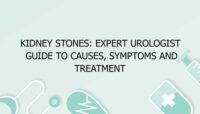Breast Biopsy: Purpose, Procedure, and Risks
A breast biopsy is a medical procedure used to diagnose and evaluate abnormalities in the breast tissue. It involves the removal of a small sample of breast tissue for examination under a microscope. This procedure is crucial for detecting breast cancer, benign tumors, and other breast conditions. Understanding the purpose, procedure, risks, and preparation for a breast biopsy is essential for patients undergoing this test.
Purpose of Breast Biopsy
The primary purpose of a breast biopsy is to obtain a tissue sample from the breast to determine whether a suspicious area is cancerous or benign. It is typically recommended when imaging tests, such as mammograms or ultrasounds, reveal abnormalities like lumps, calcifications, or asymmetries that require further investigation. A breast biopsy helps in making an accurate diagnosis, guiding treatment options, and providing peace of mind to patients.
Procedure for Breast Biopsy
**1. *Preparation*: Before the biopsy, the healthcare provider will discuss the procedure with the patient, including the reasons for the biopsy and what to expect. Patients may be advised to avoid certain medications or supplements that can increase bleeding risk, such as aspirin or vitamin E.
**2. *Types of Biopsy*: Several types of breast biopsies can be performed, including:
- Fine Needle Aspiration (FNA): A thin needle is used to extract a small amount of tissue or fluid from the breast lump. This is often done if the lump is easily accessible.
- Core Needle Biopsy: A larger needle is used to remove small cylinders of tissue from the breast. This method provides more information than FNA and is commonly used for solid lumps.
- Stereotactic Biopsy: This type uses mammographic imaging to precisely locate the abnormal area in the breast and guide the needle to collect tissue samples.
- Ultrasound-Guided Biopsy: An ultrasound is used to guide the biopsy needle to the exact location of the abnormality.
- Surgical Biopsy: If other methods are inconclusive, a surgical biopsy may be performed, involving a small incision to remove part or all of the lump for examination.
**3. *During the Procedure*: The procedure typically takes place in an outpatient setting. The patient may be given a local anesthetic to numb the area, though some biopsies may be performed under sedation. The type of biopsy chosen depends on the location and characteristics of the abnormality.
**4. *Post-Procedure Care*: After the biopsy, the area may be sore, and there may be some bruising or swelling. Patients are usually advised to apply ice packs to reduce swelling and take over-the-counter pain relievers if needed. The biopsy site should be kept clean and dry.
Risks of Breast Biopsy
While a breast biopsy is generally safe, there are some risks associated with the procedure:
- Infection: Any surgical procedure carries a risk of infection, though this is rare. Patients should watch for signs of infection such as increased redness, swelling, or discharge at the biopsy site.
- Bleeding: Some bleeding at the biopsy site is normal, but excessive bleeding may occur in rare cases.
- Bruising and Swelling: These are common side effects and usually resolve on their own.
- Discomfort: Patients may experience pain or tenderness in the breast following the biopsy, which typically subsides with time.
- Scarring: There may be minor scarring at the biopsy site, particularly with surgical biopsies.
Precautions and Preparation for a Breast Biopsy
**1. *Medical History Review*: Patients should provide a complete medical history to their healthcare provider, including any medications, allergies, and previous breast conditions or surgeries.
**2. *Avoid Certain Medications*: Patients are often advised to stop taking blood-thinning medications, such as aspirin or anticoagulants, before the procedure to reduce the risk of bleeding.
**3. *Fasting*: Depending on the type of biopsy and sedation used, patients may be instructed to fast for a certain period before the procedure.
**4. *Transportation*: If sedation or anesthesia is used, patients should arrange for transportation to and from the appointment, as they may be advised not to drive.
**5. *Follow Post-Procedure Instructions*: Adhering to post-procedure care instructions, such as keeping the biopsy site clean and dry and avoiding strenuous activities, is crucial for proper healing.
Frequently Asked Questions about Breast Biopsy
- What is a breast biopsy?
A breast biopsy is a procedure to remove a small sample of breast tissue for examination to determine if a suspicious area is cancerous or benign. - Why is a breast biopsy performed?
A breast biopsy is performed to diagnose abnormalities found in imaging tests, such as lumps or calcifications, and to determine whether these abnormalities are cancerous or benign. - What are the different types of breast biopsies?
The main types include fine needle aspiration (FNA), core needle biopsy, stereotactic biopsy, ultrasound-guided biopsy, and surgical biopsy. - How is a breast biopsy performed?
The procedure involves removing a tissue sample from the breast using a needle or through a small incision, depending on the type of biopsy. - Does a breast biopsy hurt?
A breast biopsy is generally performed under local anesthesia, so pain during the procedure is minimal. Some discomfort or tenderness may be experienced afterward. - What should I expect after a breast biopsy?
After the biopsy, you may experience soreness, bruising, and swelling at the biopsy site. These symptoms typically resolve within a few days to a week. - How long does it take to get results from a breast biopsy?
Results from a breast biopsy typically take about 1-2 weeks. Your healthcare provider will discuss the results with you once they are available. - What are the risks associated with a breast biopsy?
Risks include infection, bleeding, bruising, swelling, and scarring. However, serious complications are rare. - How should I prepare for a breast biopsy?
Preparation may involve stopping certain medications, fasting if sedation is used, and arranging transportation if needed. It’s important to follow any specific instructions given by your healthcare provider. - Can I resume normal activities after a breast biopsy?
Most patients can resume normal activities within a day or two, though strenuous activities should be avoided until the biopsy site has healed. Follow your healthcare provider’s recommendations for a smooth recovery.
A breast biopsy is an important diagnostic tool that helps determine the nature of breast abnormalities. By understanding the purpose, procedure, risks, and preparation involved, patients can approach the procedure with confidence and manage their recovery effectively.


